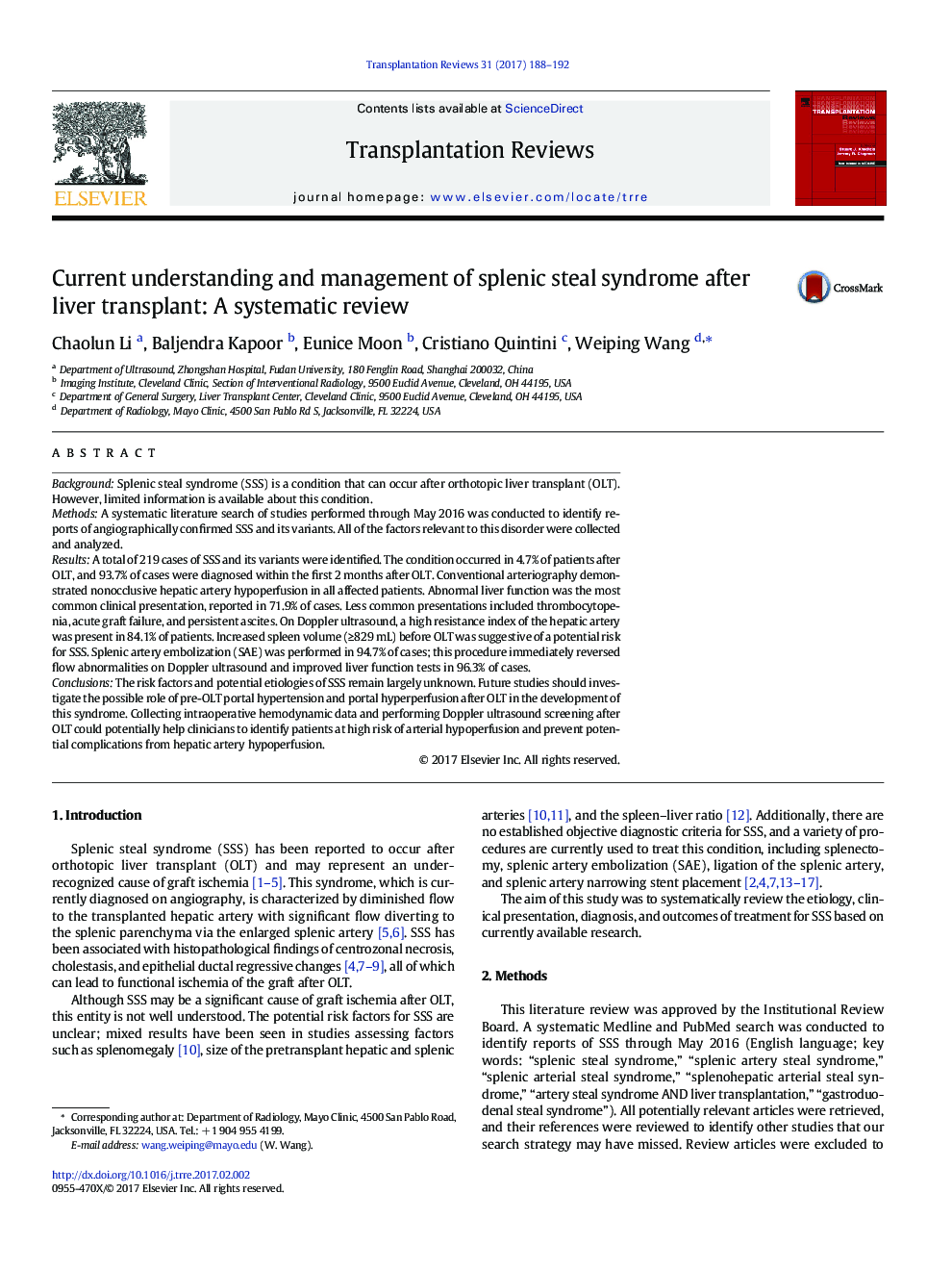| کد مقاله | کد نشریه | سال انتشار | مقاله انگلیسی | نسخه تمام متن |
|---|---|---|---|---|
| 5729450 | 1610682 | 2017 | 5 صفحه PDF | دانلود رایگان |
BackgroundSplenic steal syndrome (SSS) is a condition that can occur after orthotopic liver transplant (OLT). However, limited information is available about this condition.MethodsA systematic literature search of studies performed through May 2016 was conducted to identify reports of angiographically confirmed SSS and its variants. All of the factors relevant to this disorder were collected and analyzed.ResultsA total of 219 cases of SSS and its variants were identified. The condition occurred in 4.7% of patients after OLT, and 93.7% of cases were diagnosed within the first 2 months after OLT. Conventional arteriography demonstrated nonocclusive hepatic artery hypoperfusion in all affected patients. Abnormal liver function was the most common clinical presentation, reported in 71.9% of cases. Less common presentations included thrombocytopenia, acute graft failure, and persistent ascites. On Doppler ultrasound, a high resistance index of the hepatic artery was present in 84.1% of patients. Increased spleen volume (â¥829 mL) before OLT was suggestive of a potential risk for SSS. Splenic artery embolization (SAE) was performed in 94.7% of cases; this procedure immediately reversed flow abnormalities on Doppler ultrasound and improved liver function tests in 96.3% of cases.ConclusionsThe risk factors and potential etiologies of SSS remain largely unknown. Future studies should investigate the possible role of pre-OLT portal hypertension and portal hyperperfusion after OLT in the development of this syndrome. Collecting intraoperative hemodynamic data and performing Doppler ultrasound screening after OLT could potentially help clinicians to identify patients at high risk of arterial hypoperfusion and prevent potential complications from hepatic artery hypoperfusion.
Journal: Transplantation Reviews - Volume 31, Issue 3, July 2017, Pages 188-192
